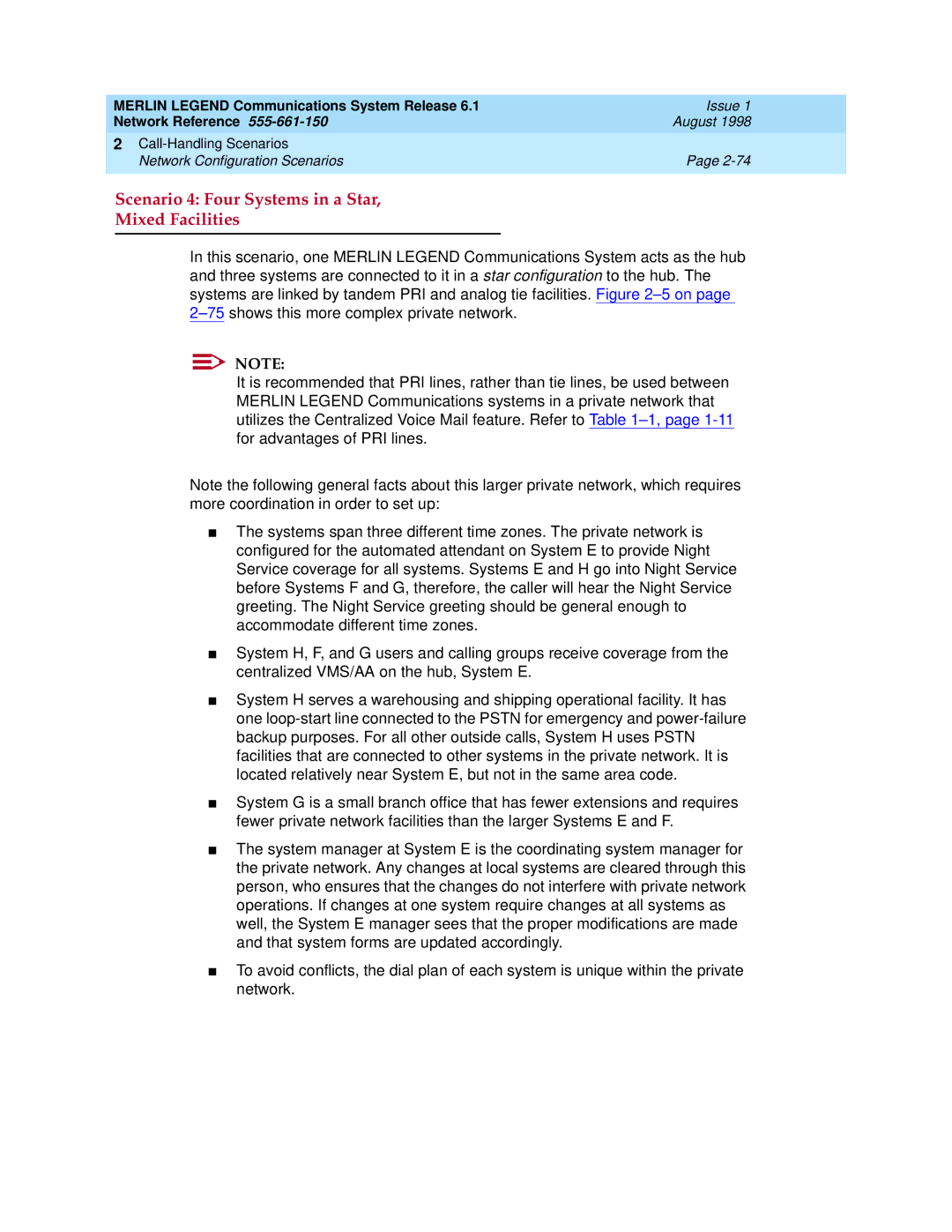MERLIN LEGEND Communications System Release 6.1 | Issue 1 | |
Network Reference | August 1998 | |
2 |
| |
| Network Configuration Scenarios | Page |
|
|
|
| Scenario 4: Four Systems in a Star, |
|
| Mixed Facilities | 2 |
|
|
|
In this scenario, one MERLIN LEGEND Communications System acts as the hub and three systems are connected to it in a star configuration to the hub. The systems are linked by tandem PRI and analog tie facilities. Figure
NOTE:
It is recommended that PRI lines, rather than tie lines, be used between MERLIN LEGEND Communications systems in a private network that utilizes the Centralized Voice Mail feature. Refer to Table
Note the following general facts about this larger private network, which requires more coordination in order to set up:
■The systems span three different time zones. The private network is configured for the automated attendant on System E to provide Night Service coverage for all systems. Systems E and H go into Night Service before Systems F and G, therefore, the caller will hear the Night Service greeting. The Night Service greeting should be general enough to accommodate different time zones.
■System H, F, and G users and calling groups receive coverage from the centralized VMS/AA on the hub, System E.
■System H serves a warehousing and shipping operational facility. It has one
■System G is a small branch office that has fewer extensions and requires fewer private network facilities than the larger Systems E and F.
■The system manager at System E is the coordinating system manager for the private network. Any changes at local systems are cleared through this person, who ensures that the changes do not interfere with private network operations. If changes at one system require changes at all systems as well, the System E manager sees that the proper modifications are made and that system forms are updated accordingly.
■To avoid conflicts, the dial plan of each system is unique within the private network.
